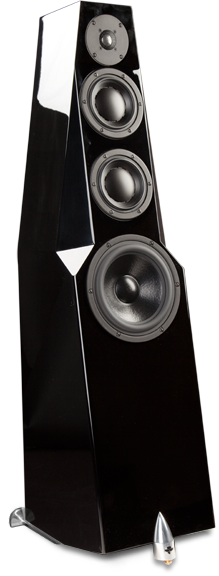- 10.14.2015
- gramophone
- Guest Post Home Improvement How-To Surround Sound Tech"knowledge"y
Easy Loudspeaker Placement for Best Sound
 By Wes Phillips
By Wes Phillips
You bought (shall we say) a pair of loudspeakers. How do you get them to sound the best they can? Believe it or not, one simple answer doesn't cost a penny—just pay some attention to distance and symmetry in setting them up.
The first two rules are breathing space and symmetry. In "Choosing Loudspeakers" we mentioned that most small loudspeakers (monitors) are designed to be placed away from the room's walls (boundaries), so pull them away from the front wall. (We always call the wall behind the loudspeakers the front wall because it is in front of you when you sit facing the speakers.) The speakers should be equidistant from the front wall (symmetry, remember?); they should also each be an equal distance from the side walls in most rooms.
Some rooms aren't perfect rectangles, so you have to be a tad flexible. If you have an open floor plan that combines the living area with a dining area or side lounge, you need to think a bit harder about the side boundaries and speaker placement.
Maybe you should place your listening chair in with its back to the open space between the living area and dining area—which lets you use the opposite wall as the front wall, putting the speakers where the sidewalls can be an equal distance from the speakers.
Or consider setting up on the diagonal using one corner where the walls meet to place each speaker firing across the long dimension of the room toward the far corner, but spaced the same distance from their respective walls.
No matter how you set up the speakers, they should form an equalateral triangle with the listening chair. A rule of thumb is to put the speakers two-thirds the distance apart that their front baffle is from your ears. (For example: The speakers are 6' apart and 9' from their baffle to your ears).
Don't like doing math? A trick carpenters used to use avoid measuring was to use a story stick. Rather than measure each drawer in a cabinet, they'd use a stick cut to fit diagonally across the rectangle of the drawer. Instead of a stick, use a piece of string and stretch it between the two speakers; then use that half three times to determine the distance from each speaker to the sides of your head when you're in the listening chair. (Obviously you need a helper for this method.)
You're not doing any of this for the look of it—what you want is to have the speaker/wall interaction and the speaker/you interaction to be balanced. You can measure to the millimeter, however, and still hear more bass from one speaker than the other because of room acoustics, so remember that nothing takes the place of listening carefully before deciding where everything goes.
Actually, that's a pretty good rule of thumb: Nothing is cast in stone, you need to listen and you need to be comfortable in your own home. Some interior decorators hate loudspeakers and want to hide them (all decorators want to hide loudspeakers, actually), but once you close your doors behind them as they toddle off to cash your check, it becomes your room again. But if you share it with anyone, you'll want him or her to be comfortable, too. Flexibility is important.
In another article, we'll tackle room acoustics and the really hard stuff—right now, try to balance boundaries and symmetry and you'll have taken the giant first step toward good room sound. Or a good-sounding room. Um, good sound.
